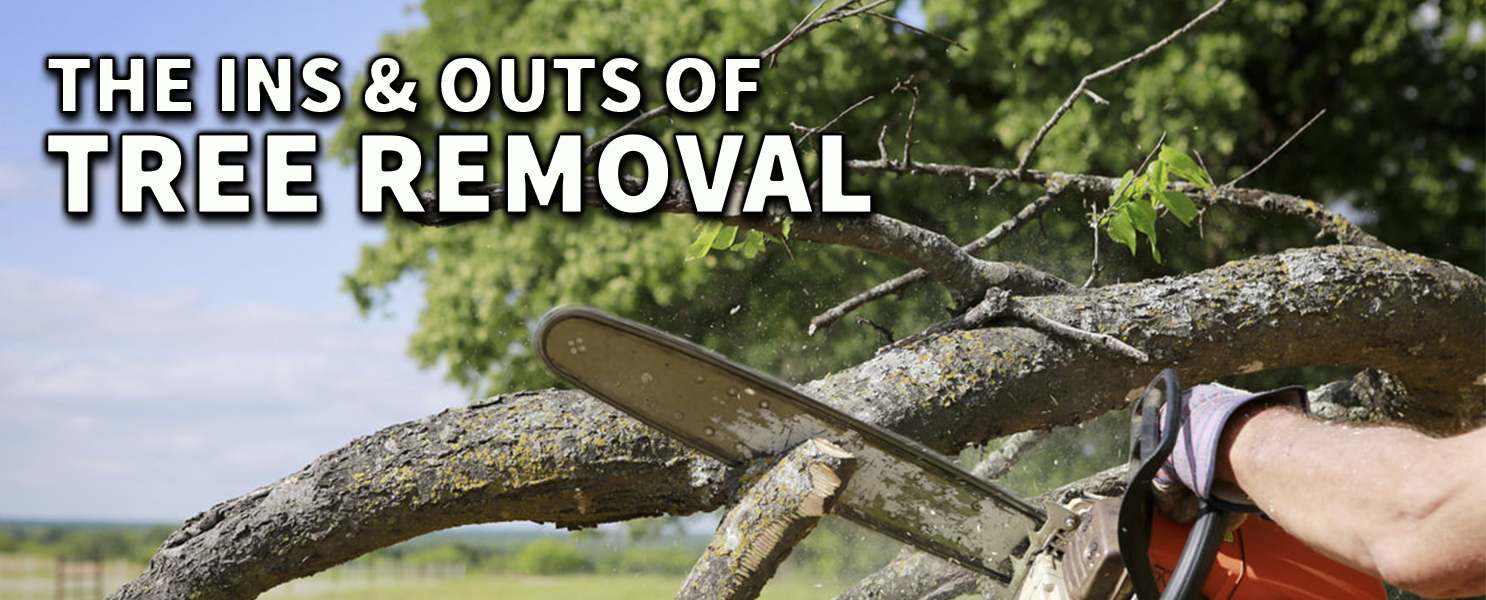
A Guide To Tree Removal in North County San Diego
The Ins & Outs Of Tree Removal
Whether or not to remove a tree can be a difficult decision. Tree Removal is one of the most dangerous aspects of tree care. Having someone professionally trained remove trees is essential. The best option is to contact a Certified Arborist to get a professional opinion on the potential safety hazards a dying tree may pose, based on the situation.
There are various reasons tree removal may become necessary. Although you should consult a Certified Arborist before making a final decision, here are some things to consider:
Appropriate Species
Sometimes removal can be required solely because the wrong tree is planted in the wrong area. Factoring into the “wrong area” can include:
- Weak wood – Trees with weak wood are more prone to frequent breakage which can become a safety hazard.
- Debris – Some trees drop excessive debris including fruit and leaves. Trees that drop of a lot of debris can be annoying, attract insects and cause rodent issues.
- Roots – Some tree species have invasive roots which can cause damage to nearby structures and concrete/pavement. Shallow roots can also pose a danger as they can cause tripping and falls.
- Invasive species – Some trees compete with the nearby landscape for light and water and can cause other trees that depend on the nutrients to decline.
Environment
- Climate – Sometimes tree species are planted without regard to its specific needs, such as lighting, temperature, etc.
- Soil – Decline of trees can be caused by a change in the soil level. Soil compaction and grade changes can also be a cause of decline.
- Root Systems – Trees planted near rock ledges or near a body of water often have shallow root systems. Shallow roots affect the structure or stability of the tree.
- Sunlight – Sometimes when other trees are removed, the remaining trees that are suddenly exposed to sunlight can become stressed.
- Most trees should not be planted near houses. While trees can be an excellent source of shade, trees should not hang over the roof. Large trees should be planted at least 20 feet away from the house.
- Drought – Drought tolerant species are the best options for water conservation and watering expenses.
Health
Besides a dead tree, various health issues can make removal the ideal option. Health reasons include:
- Decline – If more than 50% of the tree is damaged, removal is the best option as it is unstable and will most likely continue to fail and eventually die.
- Decay – Vertical cracks, seams, dead branch stumps and large wounds on the trunk of the tree can indicate internal decay. Severe damage almost always warrants removal.
- Trunk – Although a hollow trunk can go unnoticed quite awhile, the strength of the tree may be compromised. If a third of the interior is hollow, or rotten, it should probably be removed.
- Branches – Large dead branches can pose a hazard as they can fall. Much the same, dead branches on one side of the tree can cause a tree to become lopsided and can fall. Sprouts/small branches coming from around the base of the tree can indicate an unhealthy tree.
- Roots – Some mushrooms growing on the tree can be harmless. However, some can indicate root damage. Root damage can also be caused by construction/excavation near the tree. If a tree is leaning more than 15% from its vertical position, it should probably be removed. Also, a sudden lean indicates weakening roots and the tree should be removed immediately; it’s not if the tree will fall, it’s when will it fall.
Safety
Often, tree workers must remove trees growing in confined spaces near houses, utility lines, and other sensitive areas. It is imperative that you hire an experienced professional trained to work safely and efficiently.
A significant safety hazard can be posed by trees growing under or into power lines. During storms, wet foliage can cause power failures and property damage.
In North County, SDG&E (San Diego Gas & Electric company) often requires homeowners to trim-back their trees growing into or close to power lines. When homeowners fail to have the trees trimmed, the power company usually comes in and “hacks” at the trees. A Certified Arborist should assess the safety aspect of the tree; when there is a safety hazard, the tree should be removed. If there is no safety hazard, only skilled and experienced tree workers should attempt to trim trees near power lines. An accidental touch of power lines can cause deadly electrical currents. If the tree service you hire doesn’t carry valid liability insurance, the homeowner is responsible for any accidents or injuries.
Stump Grinding
Many homeowners assume that removing the stump can be done without hiring a professional. Most times the process is much more dangerous and difficult than expected. It’s not worth the risk of trying to remove it yourself in addition to then having to hire a professional to finish the job. Removal of the stump can be provided. Stump grinding by a professional is the easiest and safest way to handle this work.
The Big Decision
Contact us today to schedule an appointment with our Certified Arborist, Paul Rider. Deciding whether or not to remove your trees can be a big decision, let our professionals help and prevent potential damage or injuries.
Contact Us
We are proud to service all of North County San Diego including San Marcos, Escondido, Carlsbad, and Rancho Bernardo. Contact us or call our office today to schedule your free estimate! (760) 745-7871
